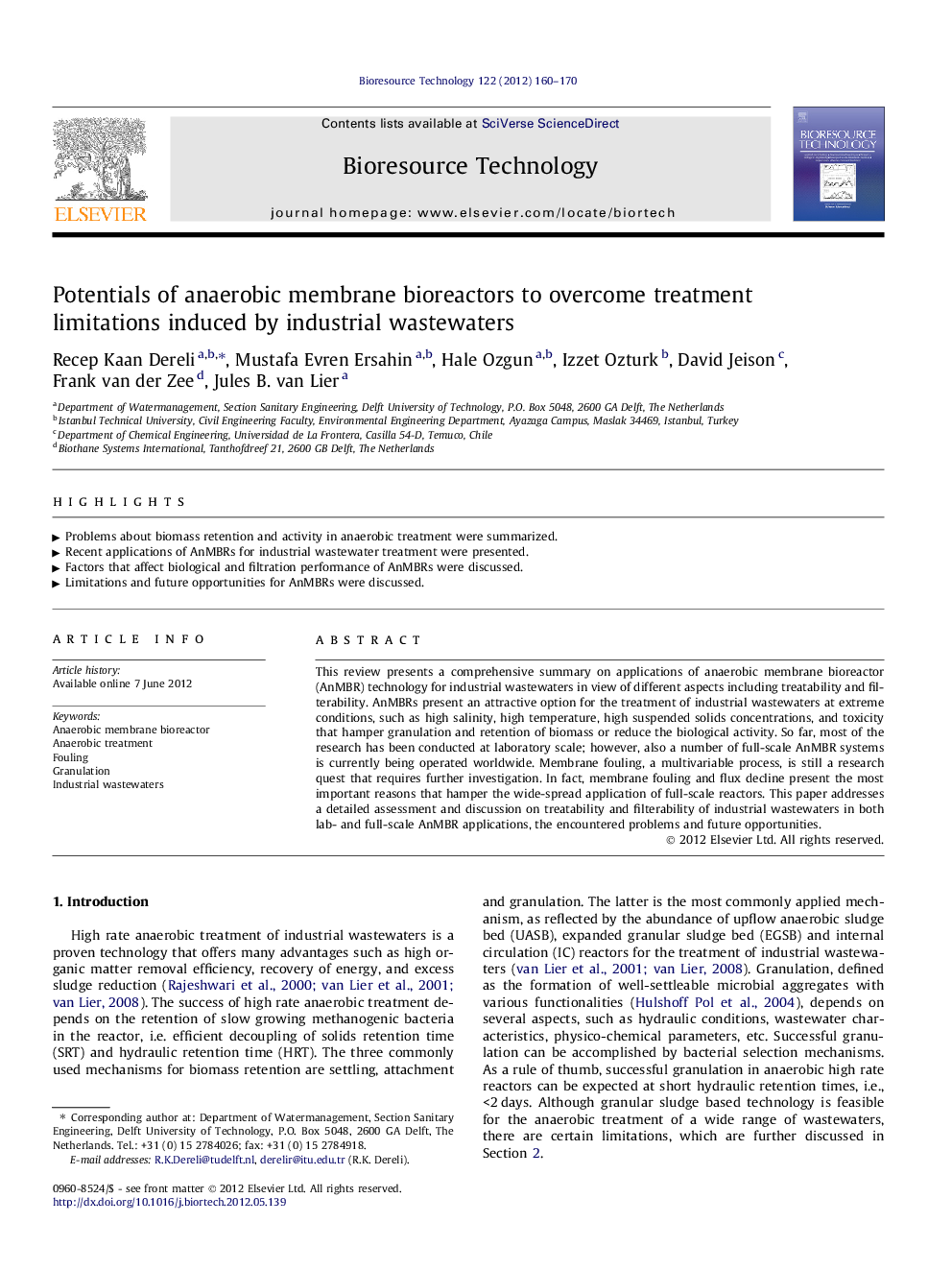| Article ID | Journal | Published Year | Pages | File Type |
|---|---|---|---|---|
| 681430 | Bioresource Technology | 2012 | 11 Pages |
This review presents a comprehensive summary on applications of anaerobic membrane bioreactor (AnMBR) technology for industrial wastewaters in view of different aspects including treatability and filterability. AnMBRs present an attractive option for the treatment of industrial wastewaters at extreme conditions, such as high salinity, high temperature, high suspended solids concentrations, and toxicity that hamper granulation and retention of biomass or reduce the biological activity. So far, most of the research has been conducted at laboratory scale; however, also a number of full-scale AnMBR systems is currently being operated worldwide. Membrane fouling, a multivariable process, is still a research quest that requires further investigation. In fact, membrane fouling and flux decline present the most important reasons that hamper the wide-spread application of full-scale reactors. This paper addresses a detailed assessment and discussion on treatability and filterability of industrial wastewaters in both lab- and full-scale AnMBR applications, the encountered problems and future opportunities.
► Problems about biomass retention and activity in anaerobic treatment were summarized. ► Recent applications of AnMBRs for industrial wastewater treatment were presented. ► Factors that affect biological and filtration performance of AnMBRs were discussed. ► Limitations and future opportunities for AnMBRs were discussed.
